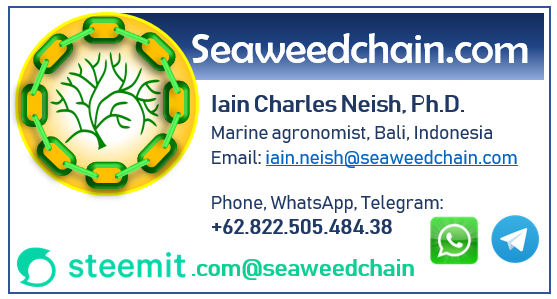EAA recognizes that people are integral to ecosystems and should be at the core of biodiversity management
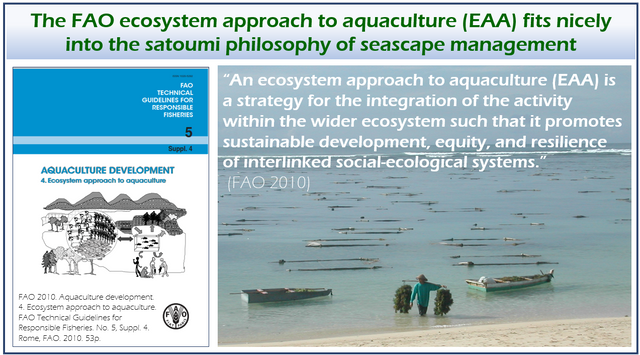
Core ideas underlying the ecosystem approach of FAO (2010) were summarized in Box 1 of that publication and are quoted in full below:
“The ecosystem approach (EA) recognizes that:
Humans are an integral part of important ecosystems, and people should be at the center of biodiversity management. This implies the need for integrated, participatory approaches in the identification of issues and further in to “ecosystem” management.
Ecosystems provide services that underpin most human activity, and that we need to ensure that we do not threaten the sustained delivery of these services through damage to ecosystem functions.
Given our ignorance of the functioning of these highly complex systems, there is a need for a precautionary and adaptive approach.
Some activities threaten or reduce the quality of ecosystem services available to society at large and therefore represent a cost that should be accounted or internalized.
Waste products from one activity or sector may serve as inputs to another, thus enhancing productivity and reducing pressure on ecosystem functions and services.
Ecosystems function at a range of scales from highly local to global and we therefore need a “nested” approach with different approaches to management according to scale.
There is a need for analysis and understanding of the broader social, economic and environmental implications of meeting targets and for transparency of decision-making in relation to trade-offs between social, economic and environmental objectives.”
Seaplants are the primary producers in EAA systems
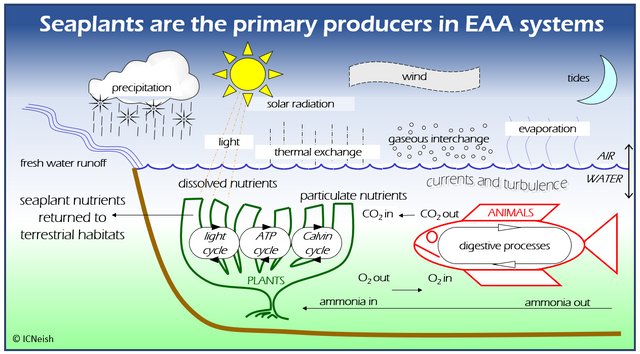
The image above illustrates how important elements of energy, nutrient, water and gas exchange interact within seashore habitats. In EAA systems, seaplants such as seaweeds, sea grasses and microalgae perform several functions that result in the delivery of ecosystem services. Their metabolic processes utilize energy, materials, water, nutrients and gases to produce biomass and metabolites that impact on other organisms. This occurs in natural systems and in aquaculture systems and in combined systems.
From a commercial standpoint, seaweeds also have a primary function because they tend to be cash crops that are produced all year long and therefore provide essential cash flow for the operation of satoumi economies.
In EAA systems, management of natural habitats and farmed areas is integrated in satoumi seascapes
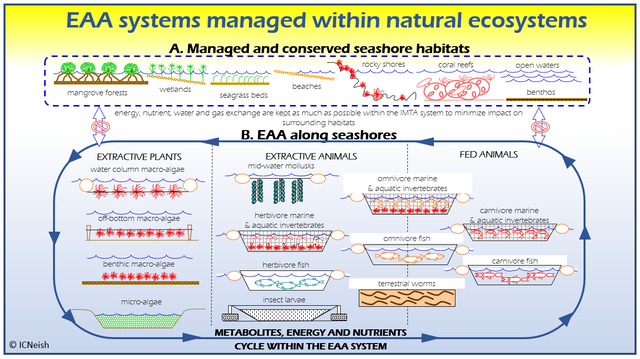
Managed and conserved seashore habitats (A in the image above) are mingled with integrated ecosystem approaches to aquaculture along seashores (B in the image above). Integrated aquaculture systems are managed in such a way that energy, nutrient, water and gas exchange are kept as much as possible within the system to minimize impacts on surrounding habitats.
One of the essential developments leading to increased sustainable aquaculture will be the development of seaplants as “fodder” in integrated systems. For example, the use of high levels of fishmeal in aquaculture diets is problematic and more sustainable solutions must be found. The diversity of herbivorous fish and invertebrates endemic to tropical seashores gives cause for optimism that aquaculture development can progress based partly on lower trophic level species.
Satoumi approaches develop EAA in a localized ‘grass-roots’ manner
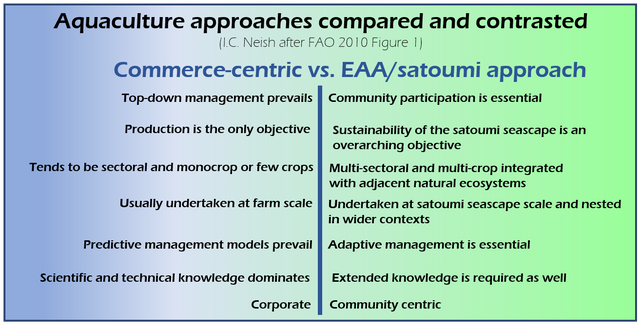
Framers of the FAO ecosystem approach to aquaculture pointed out that, as a strategy, it is not WHAT is done but rather HOW it is done … so participation of stakeholders is at the base of the strategy. On the other hand, the EAA document is heavily laden with material that addresses high-level policy, planning and governance issues. It seems to be a document that is aimed at bureaucrats more than it is at people who do aquaculture as their daily work.
When aquaculture is done on a satoumi basis it is, of course, necessary to operate within bounds of externally-imposed governance systems and to integrate value chains into market systems and economies. The fact is, however, that it is business enterprises and entrepreneurs who make aquaculture happen … not bureaucrats. As businessmen we cannot wait for the slow wheels of bureaucracy to turn.
The fact is that the EAA strategy is 100% compatible with the concept of satoumi. It is up to us, as satoumi enterprise owners and managers to apply the principles of EAA now, from the grass-roots … not to wait until those principles are forced on us from above.
So full Steem ahead!
Cheers, Iain
References:
FAO 2010. Aquaculture development. 4. Ecosystem approach to aquaculture. FAO Technical Guidelines for Responsible Fisheries. No. 5, Suppl. 4. Rome, FAO. 2010. 53p.
